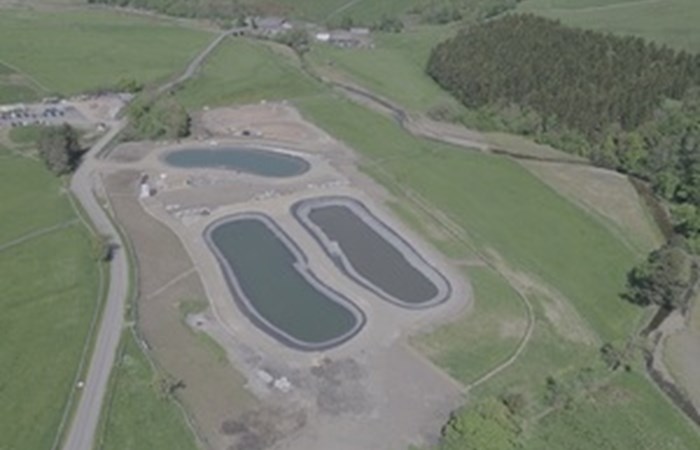Environment Agency

The Environment Agency and Coal Authority started construction on Nent Haggs Mine Water Treatment Scheme three years ago to address the polluting legacy of the industrial revolution.
The River Nent - a tributary of the River South Tyne which ultimately flows to the River Tyne and then the North Sea - is the most metal polluted river in northern England with very high concentrations of cadmium, lead and zinc - which are toxic to fish and the insects they feed on.
The River Nent only has about half of the fish and river flies expected in a non-polluted river of that kind, because the levels of harmful metals can be more than 200 times the safe level set by the government to protect them.
The effect of metal pollution on water quality and aquatic life can be seen for 60km along the river system, with the metals accumulating in the River Tyne estuary sediments in Tyneside.
Haggs adit significant source of pollution
One of the most significant sources of pollution is the Haggs adit, an abandoned mine water drainage tunnel at Nentsberry. Around 3 tonnes of zinc alone is discharged by the Haggs adit into the river each year.
Nent Haggs is a nature-based treatment scheme that will remove the metals from the mine water before they get into the river. The polluted water will be captured where the water comes out of the mine in Nentsberry and pumped to the treatment scheme through a 2.5km long underground pipeline.
The metals will be removed by passing the polluted water through the treatment ponds and reed beds at West Foreshield before the treated water is put back into the River Nent. The ponds contain a layer of material made of limestone, wood bark and straw in which natural bacterial reactions capture the cadmium and zinc that are polluting the river. Its expected that when the scheme is fully operational in early 2024, it will remove over 90% of these metals from the water.
The project also includes a new nature reserve, created in partnership with the Tyne Rivers Trust and Northumbrian Water Group, which provides space for wildlife and the local community.
The work is part of the Water and Abandoned Metal Mines (WAMM) Programme, which tackles water pollution caused by historical metal mining across England, and has been funded by the Department for Environment, Food and Rural Affairs (Defra).
The announcement comes during the lead up to World Rivers Day on 24 September which highlights the value of our rivers and aims to increase public awareness about the threats they face and what is being done to improve them.

Nent Haggs treatment ponds and reed beds
Scheme will make a vital difference
Dr Hugh Potter, the Environment Agencys Water and Abandoned Metal Mine lead, said:
This project will have an immediate impact on water quality in the rivers Nent and South Tyne and in future, will help improve sediment quality in the Tyne estuary.
It will make a vital difference to the natural environment, boosting biodiversity right across the South Tyne river and will bring economic benefits to the North East.
Water Minister Rebecca Pow said:
I am very pleased to see this major project nearing completion, which will make a vital difference both environmentally and economically to the communities in the North East and Cumbria.
Through this important programme, we are tackling water pollution caused by historical metal mining, better protecting the natural environment, boosting biodiversity, and improving Englands waterways for generations to come.
Nick Cox, the Programme Manager at The Coal Authority, added:
Following several years of development, the Nent Haggs project showcases excellent collaborative working with our partners at the Environment Agency, contractors and local stakeholders.
We are delighted to see that the project is close to completion as projects like Nent Haggs help us deliver on the new metal mine targets.
The scheme will protect and enhance the natural environment for future generations as well as positively contribute to the governments Environmental Improvement Plan.
About Metal mines
- The Romans first dug lead out of the North Pennines, but the peak of metal mining was in the 1800s. Although almost all the mines had been closed by the early 20th Century, they have now filled up with rainfall and metal-contaminated groundwater will continue to pour out of and pollute rivers for many decades to come unless action is taken.
- Pledges to reduce river pollution from abandoned metal mines are a key part of the governments Environmental Improvement Plan (EIP) in January this year, it approved a target to halve the length of rivers polluted by harmful metals from abandoned mines by 2038.
- Metal mines played a major part in Britains history, but abandoned mines now pollute our rivers, harm aquatic life and have an adverse impact on the economy. In England, this metal mine pollution affects around 1,500km of rivers 330km in the North East and 130km in the North West as well as Yorkshire, the Midl
